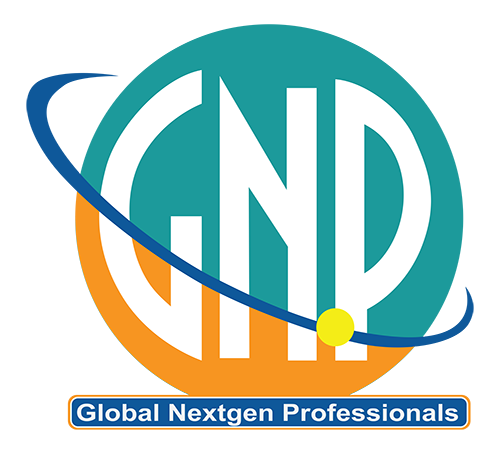NCLEX Classes for International Nurses
NCLEX Classes for International Nurses: The Ultimate Guide to Success
The NCLEX (National Council Licensure Examination) is a critical milestone for nurses seeking to practice professionally in the United States. For international nurses, acing the NCLEX can be a gateway to new career opportunities and professional growth. This blog delves deep into the importance of NCLEX classes for international nurses, how these classes can help, what to expect, and how to find the best ones to maximize your chances of success.
Why NCLEX Matters for International Nurses
The NCLEX exam ensures that nurses possess the essential knowledge and skills to provide safe and effective patient care. Unlike nursing licensure exams in some countries, the NCLEX focuses heavily on critical thinking, decision-making, and applying clinical knowledge to real-world situations.
Passing the NCLEX is a requirement for foreign-educated nurses who want to practice in the U.S. These nurses must demonstrate they meet American standards of nursing practice. For many international nurses, preparing for the NCLEX requires a shift in how they approach exam preparation, as well as familiarizing themselves with topics that may not have been part of their original training.
Benefits of NCLEX Classes for International Nurses
1. Tailored Curriculum
NCLEX classes for international nurses often offer a customized curriculum designed to bridge the gap between international nursing education and U.S. standards. These programs help you focus on key areas such as pharmacology, medical-surgical nursing, pediatrics, and more, while teaching you critical-thinking skills needed for the NCLEX.
2. In-depth Review of Key Concepts
The NCLEX exam covers a broad range of topics, including health promotion, physiological adaptation, and psychosocial integrity. NCLEX classes help you strengthen your understanding of these areas through focused review sessions, detailed lessons, and study guides. This intensive review is crucial for building confidence and minimizing test-day anxiety.
3. Test-Taking Strategies
NCLEX questions can be tricky. They often have more than one correct answer, but your goal is to select the best answer. NCLEX classes for international nurses emphasize strategies such as eliminating wrong options, prioritizing care scenarios, and understanding how to interpret and respond to complex questions.
4. Practice Exams
Mock tests and practice exams are invaluable for NCLEX preparation. Many NCLEX classes provide simulated exams to mimic the actual test environment. Practicing under timed conditions helps you build endurance, recognize your strengths and weaknesses, and get familiar with the format and types of questions you’ll face.
5. Individualized Attention
Many programs offer one-on-one coaching or smaller class sizes to ensure you get the support you need. Personalized instruction can help address specific challenges and improve your grasp of difficult concepts.
What to Look for in NCLEX Classes for International Nurses
1. Experienced Instructors
Choose classes led by experienced instructors who are knowledgeable about both the NCLEX exam and the unique challenges international nurses face. Instructors with backgrounds in both nursing education and practice bring valuable insights.
2. Comprehensive Study Materials
The best NCLEX classes for international nurses provide comprehensive study guides, video lectures, quizzes, flashcards, and online resources. These materials should be regularly updated to reflect changes in the NCLEX-RN and NCLEX-PN exams.
3. Flexible Scheduling Options
Balancing work, family, and study can be difficult. Look for classes that offer flexible schedules, including evening or weekend sessions, and the option to attend online if you cannot participate in person.
4. Positive Reviews and Success Rates
Research the track record of any program you’re considering. Testimonials from past students and success rates of NCLEX passers can give you confidence in the effectiveness of a particular program.
5. Support Beyond the Classroom
Programs that provide mentorship, study groups, and post-class support offer added value. This extra support ensures you can maintain motivation, troubleshoot challenges, and stick to a solid study plan.
How to Make the Most of Your NCLEX Classes
1. Stick to a Study Schedule
Dedicate consistent time to review class materials and practice test questions. Your commitment and discipline are essential to your success.
2. Ask Questions and Seek Help
Don’t hesitate to ask for clarification on any topic that confuses you. Active engagement during NCLEX classes for international nurses enhances your understanding and retention of key concepts.
3. Participate in Study Groups
Collaborate with other international nurses who are also preparing for the exam. Peer support can boost your morale, introduce diverse perspectives on exam questions, and offer fresh study tips.
4. Focus on Your Weaknesses
Use practice exams to identify your weak areas, then prioritize these topics during your study sessions.
5. Practice Critical Thinking
The NCLEX isn’t just about memorization. Focus on developing critical-thinking skills and practicing questions that require you to analyze, prioritize, and make sound decisions.
Finding the Right NCLEX Classes for International Nurses
Many reputable organizations offer NCLEX classes for international nurses. Online platforms like Kaplan, Hurst Review, UWorld, and local institutions can be great places to start. Before choosing, consider your personal learning style, budget, and any recommendations from colleagues.
Conclusion
Success in the NCLEX is a critical step for international nurses who want to practice in the U.S. By enrolling in NCLEX classes for international nurses, you can gain the knowledge, skills, and confidence you need to pass this challenging exam. With tailored instruction, personalized support, and dedicated practice, you’ll be well on your way to achieving your dream of a nursing career in the U.S. Good luck on your journey!
